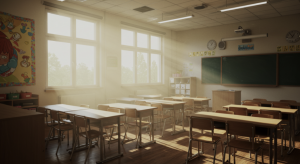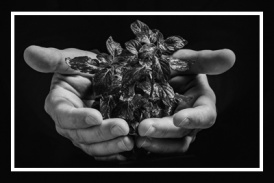Canadian experts urge protection for children from escalating heat in schools and child care settings

Schools and child care facilities are ill-prepared for extreme heat days and children are paying the price

Working across traditional boundaries, CPCHE provides common ground for organizations working to protect children’s health from environmental contaminants.
Extreme heat events caused by climate change jeopardize children’s health and learning
Released in parallel are detailed analyses and a call for immediate, coordinated efforts to safeguard children’s health, well-being, and learning in schools and child care settings across the country.
CPCHE’s summary of evidence and Collective Call for Action, signed by 40 partners and collaborators, is complemented by twin CELA reports elaborating on the need for climate-resilient infrastructure.
“Experts nationwide representing a wide range of disciplines call on all levels of government to respond with urgency,” says CPCHE Executive Director Erica Phipps. “The climate crisis is already reshaping childhood in Canada. Whether children are learning in settings that nurture or harm them depends on decisions made today.”
“This isn’t just about comfort. It’s about protecting the health, safety, and future of every child in Canada.”
Environment and Climate Change Canada (ECCC) predicts heat in 2025 will approach 2024 levels, the hottest on record. While models suggest 2025 may be slightly cooler than last year, it is virtually certain (>99% chance) to be hotter than every previous year.
The physical risks of extreme heat include heat stroke, exhaustion, rashes, and other related illnesses that can strike quickly.
CPCHE’s Call for Action says children are particularly vulnerable to these serious health hazards because:
* A child’s body produces more heat during activity and has a lower capacity to cool down through sweating than an adult’s
* They dehydrate faster than adults, and
* Young children may struggle to communicate feelings of overheating, placing great responsibility on caregivers and educators.
* Children with disabilities or chronic health issues such as asthma, heart conditions, kidney problems, and mental or physical disabilities are especially susceptible. Research shows that even temperatures not deemed "extreme" can drive up emergency room visits for kids.
Meanwhile, the impacts go beyond physical. Hot classrooms can impair attention, memory, and emotional regulation, making it harder for students to learn. Studies link elevated temperatures to irritability, poor sleep, absenteeism, and reduced academic performance.
One U.S. study estimated that, without air conditioning, a 1°F (0.5°C) increase in temperature over a school year led to a 1% decline in learning. Another estimated a 4.5% reduction in student performance on a high school exam taken on a 32.2°C day relative to a 21.1°C day.
The research underscores a troubling reality: extreme heat amplifies social inequities.
“Children in under-resourced and under-served communities often live in areas with less green space, denser housing, and limited access to cooling at home or school,” says CELA Counsel Jacqueline Wilson. “Many attend schools without air conditioning or outdoor shade — conditions that turn already hot days into dangerous ones. Indigenous children, in particular, face additional layers of vulnerability due to systemic underfunding of infrastructure on First Nations lands, including education and child care facilities.”
Without targeted investment, Canada risks leaving thousands of children in dangerously overheated classrooms and child care facilities, where the stakes are not just academic, but a matter of health, safety, and justice.
Communities all across Canada are seeing an increase in the number of extreme heat events. The number of days above 30°C is expected to double or triple in some parts of Canada by 2050 due to climate change.
CPCHE underlines that Canada’s educational infrastructure is lagging behind the changing climate, noting media reports that few schools in Quebec and Nova Scotia have air-conditioned classrooms. Similar reports suggest that less than a third of schools in Toronto have central air; in Winnipeg, dozens of facilities operate without any cooling systems at all.
Indoor temperatures during heat events can soar well beyond the recommended maximum for residential settings — of 26°C — an upper limit based on adult tolerances, not children's. Overheated classrooms may discourage school attendance, disrupting education and deny refuge to students whose homes also lack air conditioning.
Pavement and other artificial surfaces can trap heat in playgrounds and outdoor learning spaces, pushing surface temperatures to dangerous levels. In an Arizona study, school playgrounds were the hottest spots measured. Shade is too often a luxury — more available in affluent schools than in lower-income areas. The increasing use of artificial turf is eclipsing the heat resilience offered by grass and vegetation, while posing additional health risks associated with toxic chemicals and microplastics.
The CELA reports stress that the crisis is especially acute in First Nations communities, where chronic underfunding has left housing, child care centres, and schools ill-equipped to withstand extreme weather. Indigenous children face disproportionate exposure to poor air quality, wildfire smoke, and extreme heat, raising serious environmental justice concerns.
Blueprint for safer, cooler learning environments
CPCHE, CELA and partners lay out a detailed action plan to adapt Canada’s schools and child care settings to extreme heat. Central to the plan is adopting a maximum indoor temperature standard of 26°C. This threshold, they argue, must be supported with real investment—especially in under-resourced communities.
Key recommendations:
* Mechanical cooling systems: Schools and child care centres must install or upgrade HVAC systems and ensure that indoor spaces can maintain a maximum temperature of 26 degrees Celsius, prioritizing low-energy and zero-carbon technologies like heat pumps.
* Building retrofits: Investments should go beyond cooling. Retrofitting buildings for energy efficiency—through improved insulation, cool roofing, and energy efficient ventilation—will also help reduce emissions and energy costs.
* Passive and behavioural measures: From window shading to turning off heat-generating electronics, simple strategies can help manage indoor temperatures. But schools and child care programs need guidance, training, and resources to implement them effectively.
* Greener outdoor spaces: More trees, natural ground cover, and shade structures are essential. CPCHE also recommends restricting dark pavement and banning the use of artificial turf due to its heat-trapping and environmental and health risks.
* Data collection and monitoring: Better data on indoor temperatures and impacts of heat on student health.
Release in full: https://bit.ly/44CVsHI
Terry Collins
Terry Collins & Assoc. inc
+1 416-878-8712
email us here
Legal Disclaimer:
EIN Presswire provides this news content "as is" without warranty of any kind. We do not accept any responsibility or liability for the accuracy, content, images, videos, licenses, completeness, legality, or reliability of the information contained in this article. If you have any complaints or copyright issues related to this article, kindly contact the author above.
Tower Crane Rental Market Size, Share, Competitive Landscape and Trend Analysis Report 2032
Donglify Launches Team Member Accounts: A Smarter Way to Share USB Dongles
Digital Manufacturing Market Analysis: Trends, Growth, and Future Outlook 2021-2030
Więcej ważnych informacji
 Jedynka Newserii
Jedynka Newserii

 Jedynka Newserii
Jedynka Newserii

Konsument

Tylko 35 proc. Celów Zrównoważonego Rozwoju ONZ możliwe do osiągnięcia przed 2030 r. Potrzebna ściślejsza współpraca międzynarodowa
Jak wynika z raportu ONZ, choć w ciągu ostatniej dekady dzięki dążeniu do realizacji przyjętych celów udało się poprawić życie milionów ludzi na całym świecie, to jednak tempo zmian pozostaje zbyt wolne, by dało się je osiągnąć do 2030 roku. Postęp hamują przede wszystkim eskalacja konfliktów, zmiana klimatu, rosnące nierówności i niewystarczające finansowanie. Jak wynika ze sprawozdania Parlamentu Europejskiego, problemem jest także brak ścisłej współpracy międzynarodowej i sceptyczne podejście niektórych państw ONZ.
Przemysł spożywczy
UNICEF: Wszystkie dzieci poniżej piątego roku życia w Gazie cierpią z powodu niedożywienia. Sytuacja jest katastrofalna

Ataki Izraela na Strefę Gazy i jej izolacja doprowadziły do całkowitego załamania podstawowych usług i ograniczenia możliwości dostaw i dystrybucji pomocy humanitarnej – wskazuje UNICEF. W efekcie setki tysięcy Palestyńczyków są w sytuacji ciągłego zagrożenia życia i cierpią z powodu niedożywienia i głodu. Ta klęska dotyczy praktycznie wszystkich dzieci poniżej piątego roku życia. Konflikty są jednym z głównych przyczyn braku bezpieczeństwa żywnościowego, głodu i niedożywienia na świecie. Szczególnie dotyczy to Afryki i Azji Zachodniej.
Prawo
Branża ciepłownictwa czeka na unijną i krajową strategię transformacji. Liczy na większe fundusze i korzystne regulacje

Komisja Europejska zapowiedziała rozpoczęcie w I kwartale 2026 roku prac nad strategią dla ciepłownictwa i chłodnictwa. Nad tym strategicznym dokumentem w zakresie ciepłownictwa pracuje także polski rząd. Branża podkreśla, że obie te strategie będą miały kluczowe znaczenie dla trwającej transformacji w ciepłownictwie, czyli przyszłości ogromnych inwestycji, które czekają sektor do 2050 roku. Jednocześnie apeluje o większe wsparcie tego procesu ze środków publicznych.
Partner serwisu
Szkolenia

Akademia Newserii
Akademia Newserii to projekt, w ramach którego najlepsi polscy dziennikarze biznesowi, giełdowi oraz lifestylowi, a także szkoleniowcy z wieloletnim doświadczeniem dzielą się swoją wiedzą nt. pracy z mediami.


![Nestlé w Polsce podsumowuje wpływ na krajową gospodarkę. Firma wygenerowała 0,6 proc. polskiego PKB [DEPESZA]](https://www.newseria.pl/files/1097841585/fabryka-nesquik_1,w_85,r_png,_small.png)






.gif)

 |
| |
| |
|